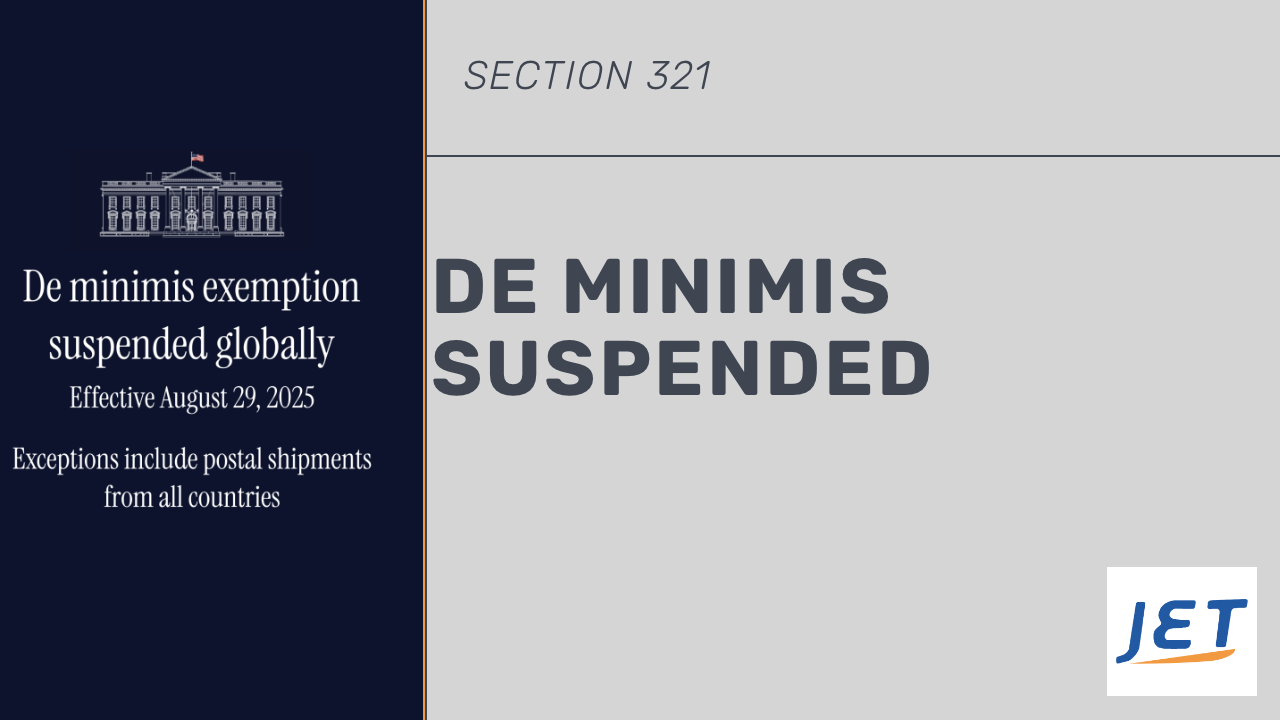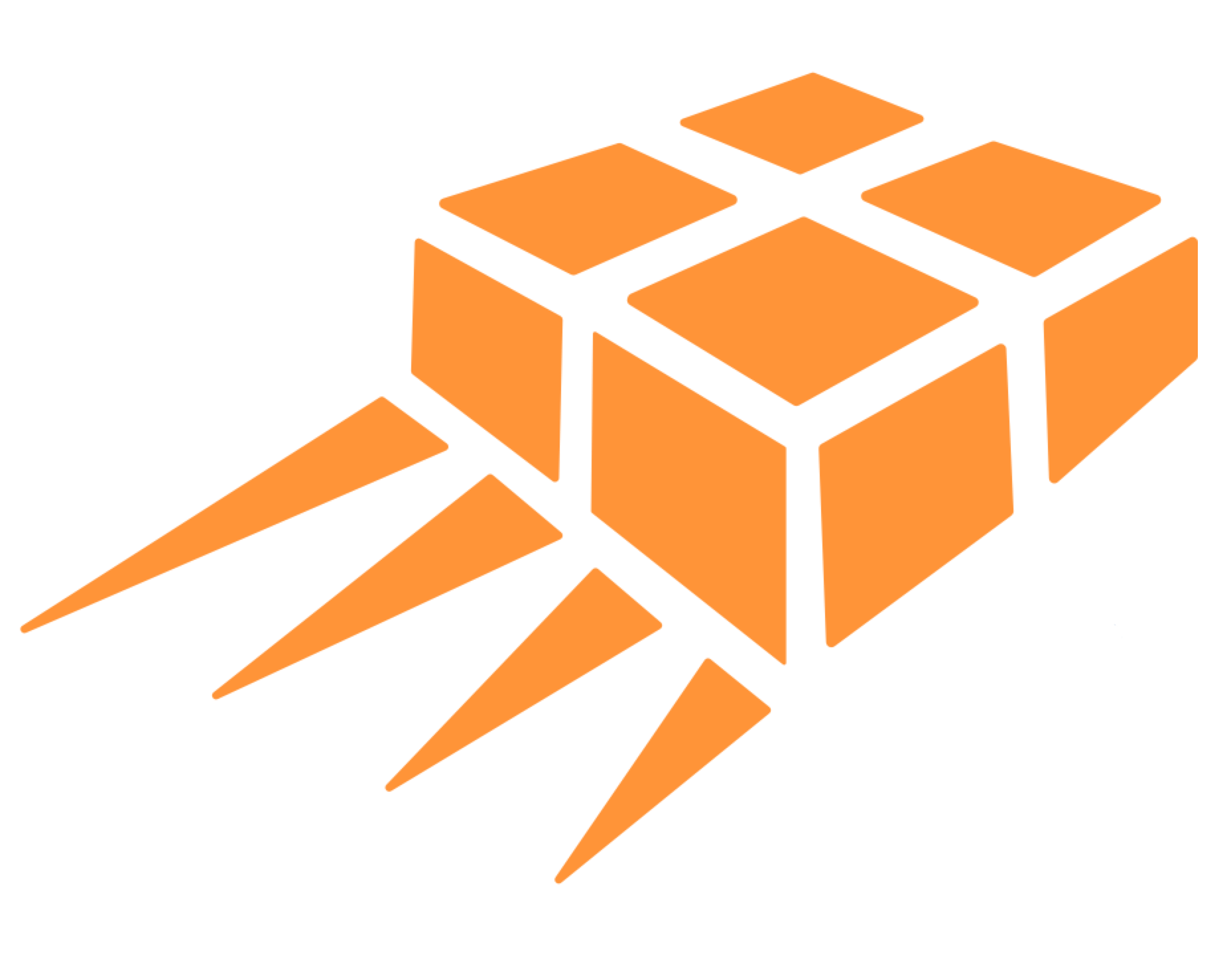
How to import without Section 321
The End of an Era: Section 321 De Minimis Set to Close Forever on August 29th
Section 321 "de minimis" exemption - a cornerstone of e-commerce imports , has been eliminated. The time to build new processes is now.
The elimination of Section 321 de minimis is a significant shift, especially fordirect-to-consumer international shipping. Adapting requires a multi-pronged approach focused on compliance and supply chain resilience.
As of August 29, 2025 the de minimis exemption ends. Here’s some thoughts:
The executive order signed July 30 will remove Section 321 treatment for all goods entered commercially.
Here are some key strategies our team is advising:
1. Master Customs Compliance & Documentation
- 10-Digit HTS Codes: Every product imported will require a 10-digit Harmonized Tariff Schedule (HTS) code. Invest in accurate classification. This might require hiring or training in-house experts, or leveraging specialized software or customs brokers. Misclassifications can lead to delays, fines, and even seizure of goods.
- Detailed Product Descriptions: That supports the HS code
- Country of Origin Accuracy: This is crucial for determining applicable duties and tariffs (e.g., Section 301 tariffs on Chinese goods).
- Enhanced Data Requirements: Be prepared to provide more information about shipment recipients
- Partner government agency: be sure that products that are regulated by partner government agencies meet the necessary requirements. This can include such things as labelling, certifications, prior notice and other items.For consumer products, be ready to provide Consumer Product Safety Commission (CPSC) testing certificates or General Certificates of Conformity (GCCs), Read more about Food and Drug requirements.
- Automation & Tech Solutions: Leverage digital logistics platforms, customs compliance software, and AI-powered tools to automate documentation, calculate duties/taxes, and pre-screen shipments. This can reduce manual errors and streamline the process.
Rethink Your Supply Chain & Sourcing
The previous direct-to-consumer model for low-value goods is now "back to the future." Import consolidated shipments to a single importer of record, single clearance, and
Adjust Pricing & Financial Strategies
The added costs from duties and compliance will impact your bottom line.
- Landed Cost Calculation: Accurately calculate the total landed cost for each product, including purchase price, shipping, insurance, and all applicable duties, taxes, and customs fees. This is essential for setting competitive but profitable pricing
- Transparent Pricing: Be transparent with customers about any new shipping costs or import fees, especially if you pass them on. Clear communication can help manage expectations.
- Absorb vs. Pass On Costs: Strategically decide how much of the increased costs to absorb and how much to pass on to consumers. This will depend on your profit margins, competitive landscape, and customer sensitivity to price changes.
- Explore Free Trade Agreements (FTAs): If you source from countries with FTAs with the U.S., investigate if your products qualify for preferential treatment. This can significantly reduce or eliminate duties, but requires meticulous rules-of-origin checks.
- Customs Bonds: Understand the requirements for customs bonds, which are often necessary for formal entries to guarantee duty payment.
4. Enhance Partnerships & Expertise
You don't have to navigate this alone.
- Customs Brokers: Partner with experienced and reputable licensed customs brokers. They are experts in HTS classification, customs regulations, and can manage the complex formal entry process for you.
- 3PLs (Third-Party Logistics Providers): Collaborate with 3PLs that offer integrated solutions, including warehousing, domestic fulfillment, and customs clearance assistance. Many 3PLs are adapting their services to help businesses navigate the post-de minimis landscape.
- Trade Consultants: Consider consulting with trade advisory experts who can provide guidance on specific regulations, optimize your supply chain, and help with risk mitigation.
- Logistics Technology Providers: Utilize platforms that offer features like automated duty/tax calculation at checkout, real-time shipment tracking, and streamlined documentation.
5. Stay Informed
Trade regulations can evolve rapidly. Contact our team for a consultation.
Postal Imports and de minimis processing: Points to consider
- The postal channel has been explored as a potential loophole around the "commercially entered" wording. Where there continue to be an exemption for "gifts"?
- The CN22 postal customs declaration form for postal shipments does not mandate country of origin.
- Will postal import duty be collected from the consignee? Or by the shipper?
- Country of origin and from where goods ship are more important data points.
- Postal imports are said to be subject to IEEPA reciprocal rates based on country of origin.





